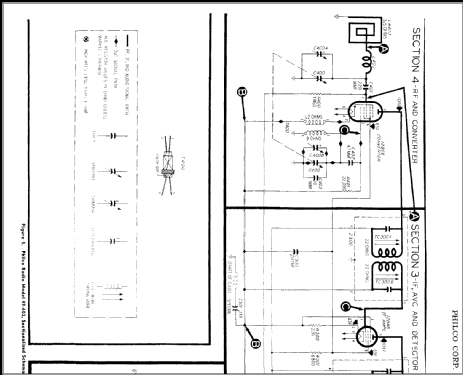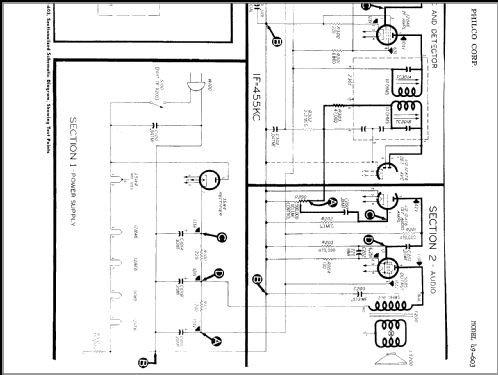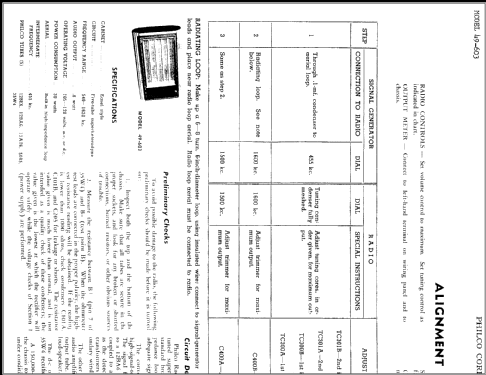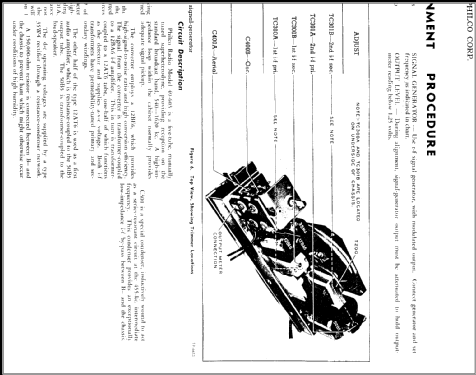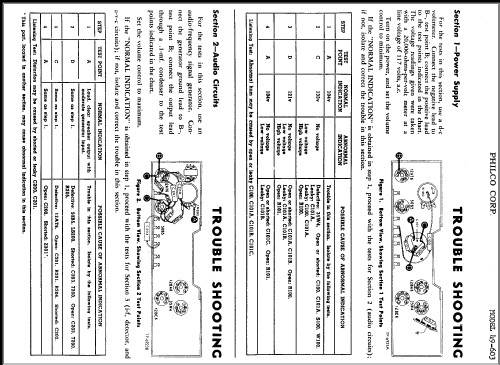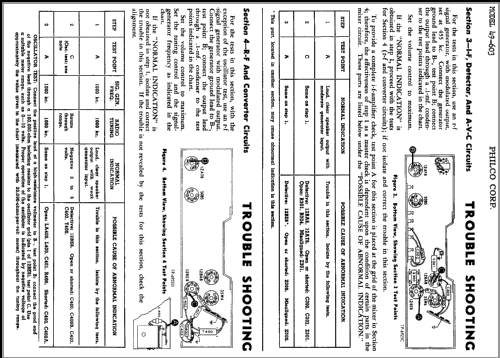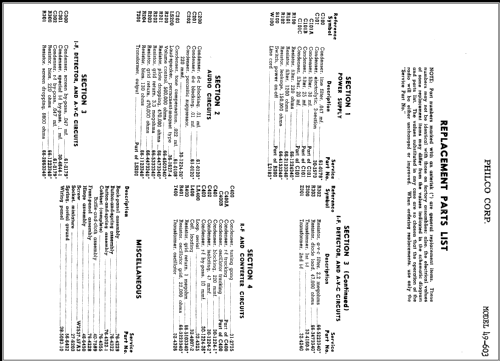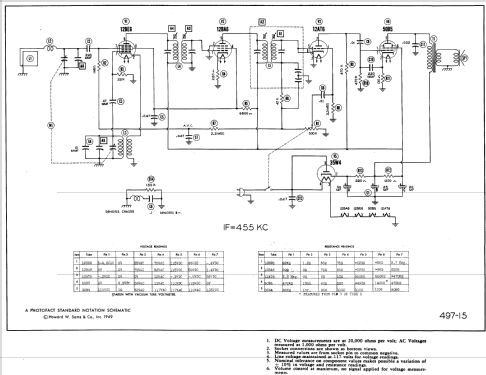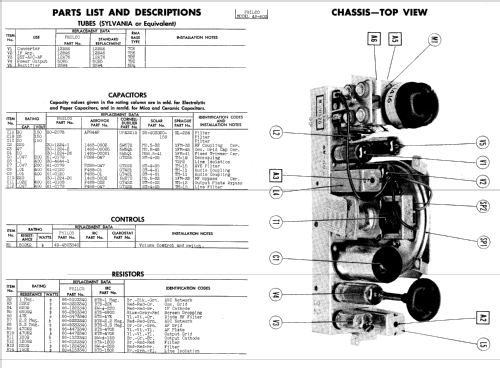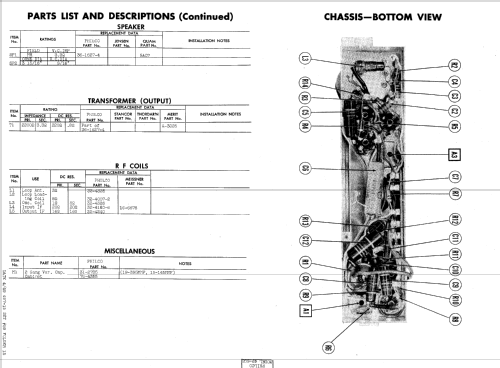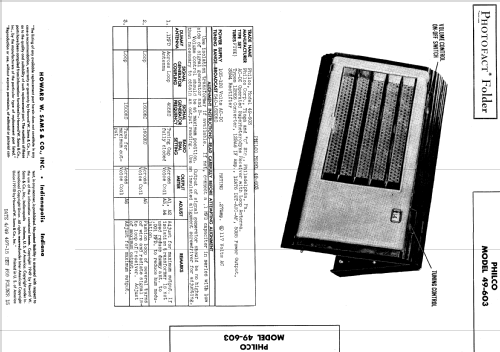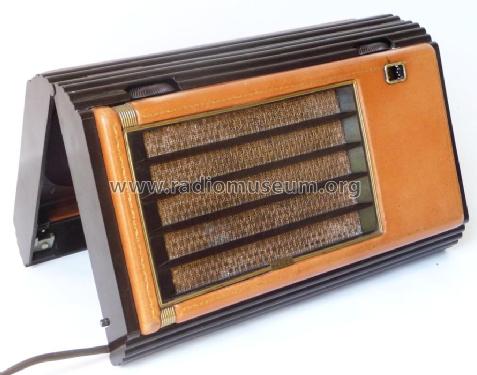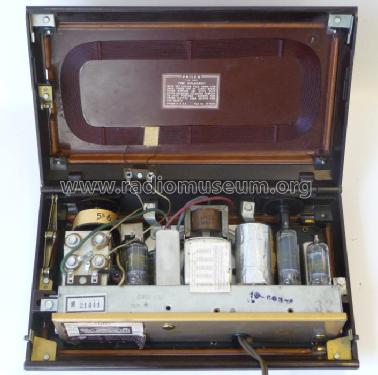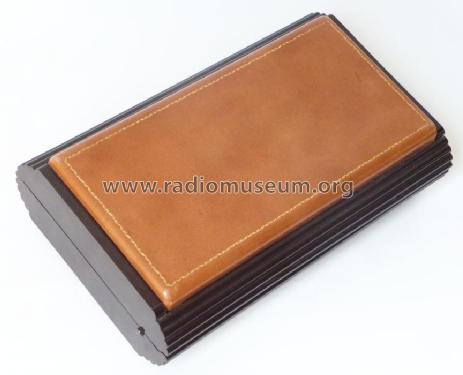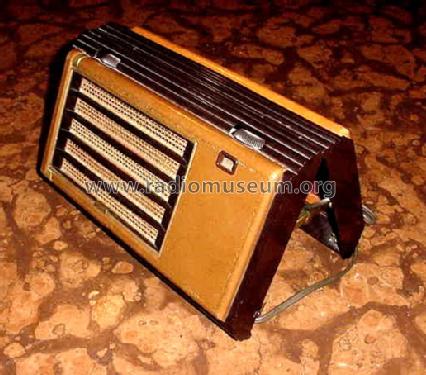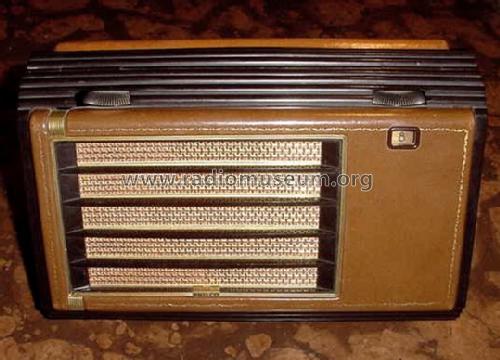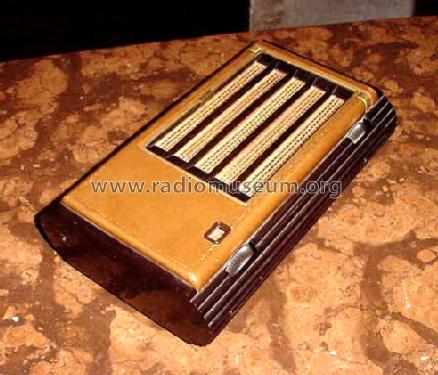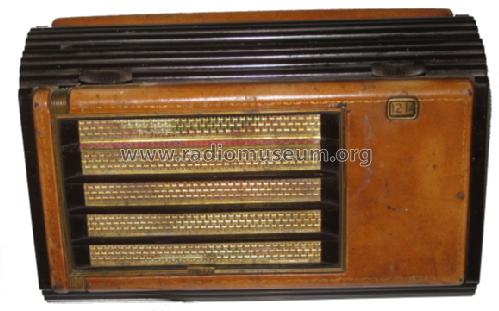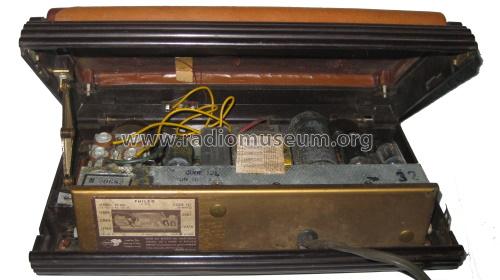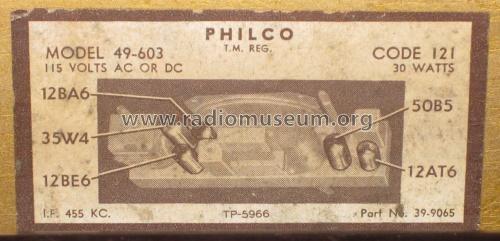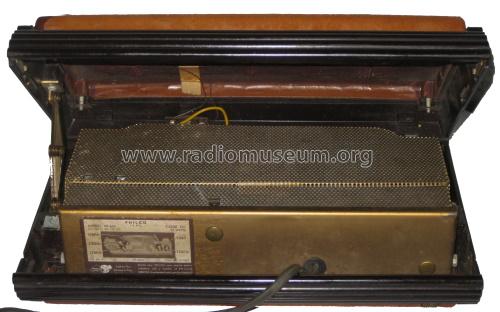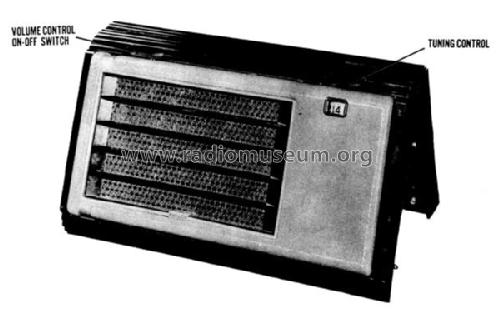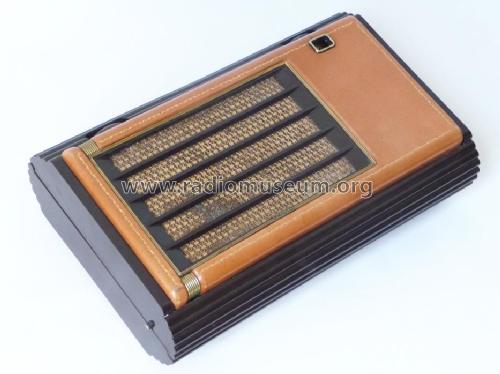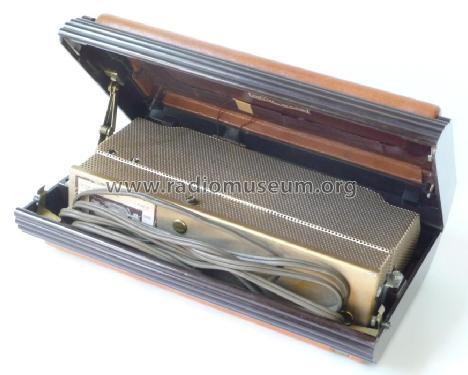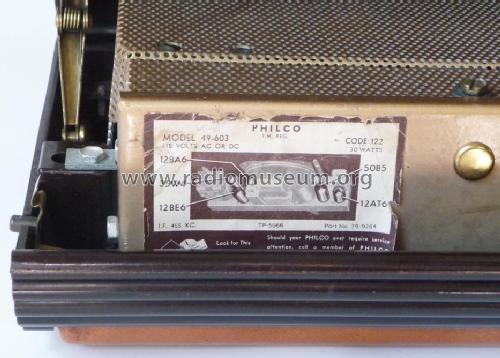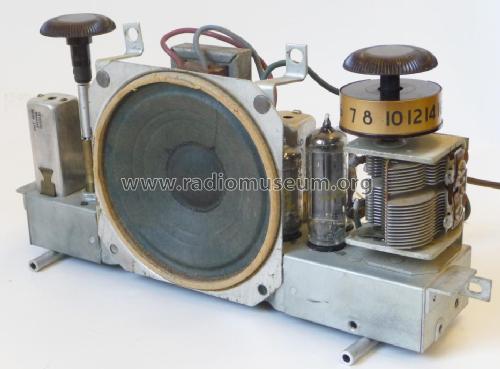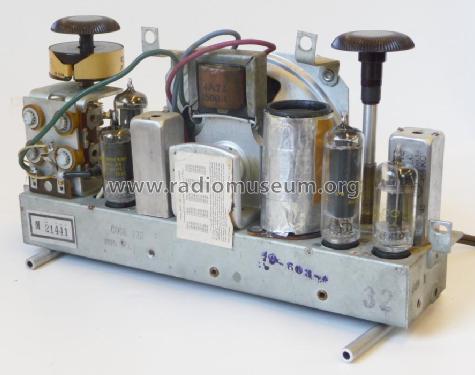- Country
- United States of America (USA)
- Manufacturer / Brand
- Philco, Philadelphia Stg. Batt. Co.; USA
- Year
- 1949
- Category
- Broadcast Receiver - or past WW2 Tuner
- Radiomuseum.org ID
- 50941
Click on the schematic thumbnail to request the schematic as a free document.
- Number of Tubes
- 5
- Main principle
- Superheterodyne (common); ZF/IF 455 kHz; 1 AF stage(s)
- Wave bands
- Broadcast only (MW).
- Power type and voltage
- AC/DC-set / 105 - 120 Volt
- Loudspeaker
- Permanent Magnet Dynamic (PDyn) Loudspeaker (moving coil) / Ø 4 inch = 10.2 cm
- Material
- Plastics (no bakelite or catalin)
- from Radiomuseum.org
- Model: 49-603 - Philco, Philadelphia Stg. Batt
- Shape
- Tablemodel, with any shape - general.
- Dimensions (WHD)
- 10.25 x 6.5 x 3 inch / 260 x 165 x 76 mm
- Notes
- Hand Bag radio, to be opened and set up on edge for operation to provide required heat dissipation.
- External source of data
- Ernst Erb
- Source of data
- Collector's Guide to Antique Radios 4. Edition
- Circuit diagram reference
- Rider's Perpetual, Volume 18 = 1949 and before
- Literature/Schematics (1)
- Photofact Folder, Howard W. SAMS (Date 4-49, Set 59, Folder 15)
- Other Models
-
Here you find 4120 models, 2228 with images and 3768 with schematics for wireless sets etc. In French: TSF for Télégraphie sans fil.
All listed radios etc. from Philco, Philadelphia Stg. Batt. Co.; USA
Collections
The model 49-603 is part of the collections of the following members.
Forum contributions about this model: Philco, Philadelphia: 49-603
Threads: 1 | Posts: 1
This interesting compact Philco folds into the shape of a book or small old-style purse when not in use.
The tuning capacitor shaft includes a ball bearing vernier drive reduction system. Typically, the grease has solidified so that the knob appears to operate on a solid shaft with just 1/2 turn tuning range. In this condition, tuning is tricky, and the mechanical mounting of the tuning capacitor seems to be too flimsy for the amount of force that needs to be applied against the knob.
The grease can be softened by applying penetrating oil, followed by a lot of rotation of the shaft. I used a drill to spin the shaft at moderate speed (it is OK to turn beyond the end of the tuning range, at which point the shaft slips as it was designed to) and work the oil into the bearing. After a few minutes, the oil and grease properly lubricate the vernier system, and the tuning has a much more pleasant feel. The mechanical reduction of the vernier means that the knob rotates many full turns to get from one end of the tuning range to the other.
Thomas Albrecht, 05.Sep.10
